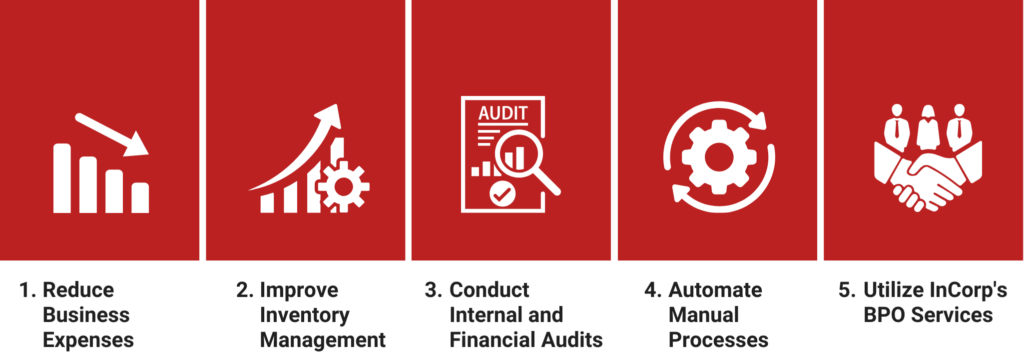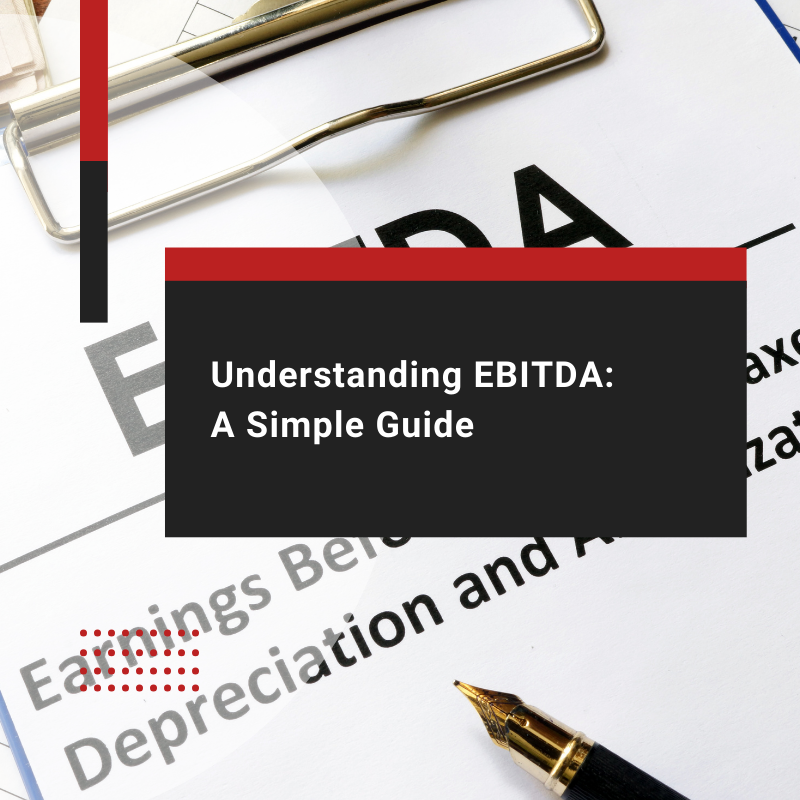EBITDA is a key financial metric to assess a company’s operating performance. Unlike net income, EBITDA focuses purely on the profitability of a business’s core operations, stripping away the effects of financing and accounting decisions.
This makes it a valuable tool for investors, analysts, and business owners alike, as it gives a more precise comparison of profitability across companies and industries. In this article, we will dive into the meaning of EBITDA, why it matters, and how to calculate it to evaluate a company’s financial health.
What is EBITDA?
EBITDA stands for Earnings Before Interest, Taxes, Depreciation, and Amortization. It measures a company’s overall financial performance and is an alternative to other financial metrics such as earnings, revenue, and income.
Its key components include:
- Interest: This refers to the costs incurred from borrowing, including interest payments on loans from banks or other lenders.
- Taxes: This encompasses all forms of taxation imposed by government and regulatory bodies.
- Depreciation: This expense reflects the decrease in the value of a company’s tangible fixed assets over time. Depreciation is a non-cash expense that accounts for wear and tear on these assets.
- Amortization: Similar to depreciation, amortization is a non-cash expense but pertains to intangible assets. It involves the gradual write-off of the initial cost of these intangible assets over their useful life.
Is EBITDA the Same as Gross Profit?
Although EBITDA and gross profit are related, they measure different aspects of financial performance. Gross profit is calculated by subtracting the cost of goods sold (COGS) from revenue, reflecting the profitability of a company’s core business activities before accounting for other expenses.
On the other hand, EBITDA provides a broader view of operational performance by excluding interest, taxes, depreciation, and amortization. This makes EBITDA a more precise indicator of a company’s operational profitability, as it eliminates non-operating expenses and non-cash items from the equation.
What Does an EBITDA Tell You?
EBITDA is a key metric that businesses, valuators, and bankers use to assess a company’s financial performance and profitability before non-core expenses. If you’re wondering, “What is EBITDA used for?” its primary functions include the following:
Businesses and Valuators
Entrepreneurs and business valuators frequently rely on EBITDA to determine a company’s valuation during sales or acquisitions.
A common approach involves applying multiples to EBITDA to estimate the business’s worth, which can vary based on market conditions, industry, and location.
Financial Institutions
Bankers use EBITDA to evaluate a company’s cash flow for repaying long-term debt and calculate its debt coverage ratio, indicating its ability to meet debt obligations.
Financial institutions often include EBITDA in loan conditions, such as requiring a specific debt coverage ratio.
Why Use EBITDA for Business
Understanding how to calculate and evaluate EBITDA is crucial for business owners for two key reasons. First, EBITDA demonstrates a company’s value. Second, it shows potential buyers and investors the company’s worth, highlighting possible growth opportunities.
By eliminating the effects of financing, taxes, and accounting choices, EBITDA allows for a straightforward comparison of profitability across companies and industries. This makes it a widely used tool among owners, buyers, private equity investors, and analysts globally.
Additionally, the EBITDA multiple can help estimate a company’s valuation range, which we will explore next, along with its significance for businesses.
Read more:
- Why Hiring a Headhunter in Indonesia is Key to Your Business Success
- The Importance of Stakeholders in Business: A Comprehensive Guide
- The Advantages of Using an Employer of Record for IT Hiring
EBITDA vs. EBITA
Like EBITDA, EBITA (earnings before interest, taxes, and amortization) is a non-GAAP financial metric investors use to measure a company’s profitability.
Although EBITA is less commonly used than EBITDA, which includes depreciation in its calculation, EBITDA is generally seen as a better indicator of operating profitability in industries with significant assets, such as utilities, telecommunications, and manufacturing.
How to Calculate EBITDA
EBITDA can be calculated in two ways: by starting with net income and working backward or by beginning with gross profit and calculating it forward.
Both approaches follow a standard EBITDA format, which ensures consistency when comparing a company’s performance across different periods or with other businesses.
Backward Calculation
Starting with net income, we add back non-operating expenses to arrive at EBITDA. Here’s the formula:
EBITDA = Net Income + Interest Expense + Tax Expense + Amortization Expense + Depreciation Expense
Forward Calculation
Starting with revenue, we subtract operating expenses and SG&A expenses to calculate EBITDA. Here’s the formula:
EBITDA = Revenue – Operating Expenses – SG&A Expense
It is important to note that neither formula represents cash flow from operations.
Example of EBITDA
Consider a company with USD 100 million in revenue, USD 40 million in cost of goods sold (COGS), and USD 20 million in overhead expenses. With USD 10 million in depreciation and amortization costs, the operating profit comes to USD 30 million.
After accounting for a USD 5 million interest expense, the company’s earnings before taxes are USD 25 million. With a 20% tax rate, USD 5 million is deducted, leaving a net income of USD 20 million. By adding back depreciation, amortization, interest, and taxes to net income, the EBITDA totals USD 40 million.
What is A Good EBITDA?
What constitutes a good EBITDA margin depends on the industry and the company’s strategy. For instance, a smaller company with a higher margin might be seen as more efficient. A larger company with a lower margin may prioritize volume, which could align with its business goals.
For example, Company X has an EBITDA of USD 800,000 and a total revenue of USD 8 million, resulting in a 10% EBITDA margin. Meanwhile, Company Y has an EBITDA of USD 960,000 and a total revenue of USD 12 million, yielding an 8% margin.
Though Company Y has a higher EBITDA, Company X has a better margin, which could make it more attractive to an investor.
Disadvantages of EBITDA
The essence of EBITDA is that it captures only a portion of a business’s financial narrative. While this aspect is important, it overlooks other critical elements. Specifically, companies with significant debt obligations may be at risk if their interest rates fluctuate.
For instance, if a company’s debts are tied to variable interest rates, an increase in the base rate set by Bank Indonesia could raise their borrowing costs. Such rate hikes also affect their customers, potentially leading to cash flow challenges for the company.
Tips on How to Increase Company EBITDA

Businesses can implement various strategic practices to improve EBITDA and increase profitability. These include:
Reduce Business Expenses
Cutting business expenses is vital for increasing EBITDA and can provide quick results—review costs to find savings by renegotiating contracts, eliminating unnecessary services, or consolidating suppliers.
Improve Inventory Management
Enhancing inventory management with technology can lower carrying costs and prevent stockouts, boosting efficiency and EBITDA. Maintaining good communication with suppliers is essential for anticipating price increases.
Conduct Internal and Financial Audits
Internal audits help identify overspending and enhance controls, reducing risks like fraud. Regular financial audits ensure accurate statements, aiding better decision-making and financial planning.
Automate Manual Processes
Automating manual tasks can decrease overhead costs and increase efficiency, allowing employees to focus on growth initiatives. Suitable processes for automation include customer service, HR tasks, accounts payable/receivable, and inventory management.
Utilize InCorp’s BPO Services
Consider using InCorp’s business process outsourcing (BPO) solutions, such as accounting services, payroll outsourcing, tax consulting, and Employer of Record services, to streamline operations and reduce overhead costs.
By outsourcing these non-core functions, your company can increase operational efficiency, enhance focus on revenue-generating activities, and improve EBITDA by optimizing profitability and controlling expenses.
Fill out the form below to boost your company’s profitability and drive long-term success.
Daris Salam
COO Indonesia at InCorp Indonesia
With more than 10 years of expertise in accounting and finance, Daris Salam dedicates his knowledge to consistently improving the performance of InCorp Indonesia and maintaining clients and partnerships.


